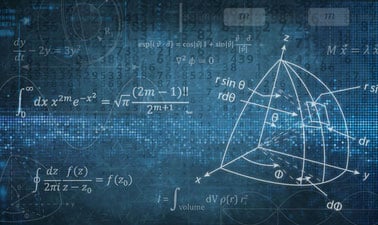Is there life beyond the Earth? How common might life be? Millions of dollars are spent by the Australian government and other countries each year on space exploration, so what do we actually learn from modern day telescopes and satellites? In this course, students will explore an introduction to the Universe and the study of astronomy.
这是一份unsw新南威尔斯大学PHYS1160的成功案例

Earth has an orbital period of 365 days and its mean distance from the Sun is $1.495 \times 10^{8} \mathrm{~km}$. The planet Pluto’s mean distance from the Sun is $5.896 \times 10^{9} \mathrm{~km}$. Using Kepler’s third law, calculate Pluto’s orbital period in Earth days.
\begin{aligned}
&T_{E}=365 \text { days }\
&r_{E}=1.495 \times 10^{8} \mathrm{~km}\
&r_{P}=5.896 \times 10^{9} \mathrm{~km}\
&T_{P}=\text { ? }\
&\left(\frac{T_{E}}{T_{P}}\right)^{2}=\left(\frac{r_{E}}{r_{P}}\right)^{3}\
&\left(\frac{365 \text { days }}{T_{P}}\right)^{2}=\left(\frac{1.495 \times 10^{8} \mathrm{~km}}{5.896 \times 10^{9} \mathrm{~km}}\right)^{3}\
&\left(\frac{365 \text { days }}{T_{P}}\right)^{2}=\left(2.54 \times 10^{-2}\right)^{3}\
&\left(\frac{1.32 \times 10^{5} \text { days }^{2}}{T_{P}{ }^{2}}\right)=1.63 \times 10^{-5}\
&T_{P}=\sqrt{\frac{1.32 \times 10^{5} \text { days }^{2}}{1.63 \times 10^{-5}}}\
&T_{P}=9.00 \times 10^{4} \text { days }
\end{aligned}

PHYS1160 COURSE NOTES :
A spherical planet orbits an F-v star with luminosity $1.5 \times 10^{34}$ erg $^{-1}$. The orbit is circular with a radius from the star of $2 \mathrm{AU}$. Assume that the planet is rapidly rotating, has an atmosphere and reflects $20 \%$ of the light that falls on it, but absorbs the other $80 \%$ and, in the assumed steady state, radiates it as a blackbody.
(a) Ignoring any greenhouse effect, what is the temperature of the planet?
Solution:
The solution to the planetary tempearture comes from assuming a state of “balanced power”. The energy received per second by the planet from its host star, $\dot{E}{\text {in }}$ is balanced by the energy it radiates per second as a blackbody, $\dot{E}{\text {out }}$. If this were not so, then the temperature of the planet would rise or fall until the balance was achieved. This would take something like the heat capacity of the atmosphere divided by $E_{\text {in }}$ or in the case of the earth a few weeks.
The energy in is the cross sectional area of the planet as viewed from the star, a disk with radius $R_{p}$ intersects the radiation that would have passed througha disk of area $\pi R_{p}^{2}$ (not $2 \pi R_{p}^{2}$, then one would have to integrate $\cos \theta$ for the incident radiation, which adds work). The flux passing through each square $\mathrm{cm}$ of the disk is $L_{} /\left(4 \pi d^{2}\right)$ where $d$ is the distance from the star to the planet. Additionally it was specified that only $80 \%$ of the flux gets through to the planets surface and contributes to its warming, so $$ \dot{E}{\text {in }}=0.8 \frac{L{}}{4 \pi d^{2}}\left(\pi R_{p}^{2}\right)
$$







